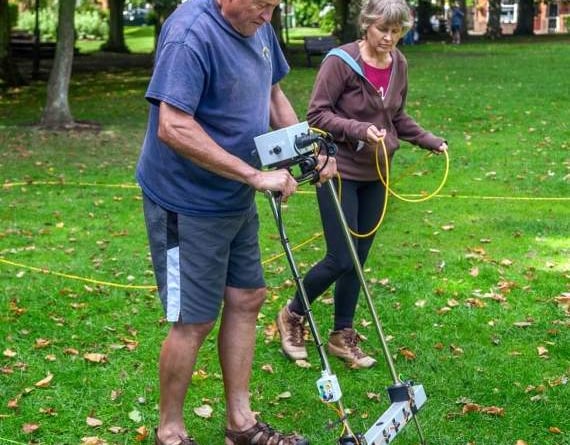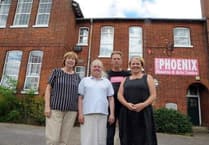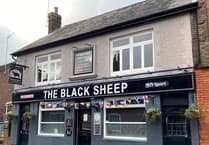ALTON’S Public Gardens will be in the spotlight next summer as they look set to yield some of their long-forgotten history in an archaeological dig.
Liss Archaeology (East Hampshire Community Archaeology) has been granted permission by Alton Town Council to carry out the dig next July as part of the British Festival of Archaeology.
They will be working in association with the Curtis Museum Volunteers and Friends of the Allen Gallery.
The idea to undertake a dig came about after this summer’s hot, dry weather revealed ‘parch marks’ in the grass area where the town council has recently restored and connected the second of Miss Bell’s fountains to the water supply, as the centre piece for a Parterre Garden of Remembrance.
According to Liss Archaeology chairman David Quick, the parch marks suggest possible foundations near the surface, which could denote the outline of former buildings.
Furthermore, workers digging out the new garden struck what appeared to be buried brick foundations that some believe could be the remains of stabling associated with Westbrooke House or a Second World War ‘British restaurant’ from which, in its day, people could buy a basic meal for ration coupons.,
The gardens were once the grounds of Westbrooke House on the High Street, a Grade II isted building, thought to date from the early 18th Century and once the home of one of the brewery owners and, later, in the mid-1800s, a private lunatic asylum. However, the site clearly has a more chequered history.
Located as it is close to the site of previous archaeological digs which have revealed Romano-British artefacts, including from an early Roman cemetery, and which concluded that there must have been a villa close by, the historical significance of the site could date back much further.
As such, Liss Archaeology asked and was granted permission to conduct a geophysics survey, carried out in August using non-invasive techniques of magnetometry and resistivity, to show up resistance and plot the presence of possible archaeological features, with a view to carrying out a community archaeological investigation next July led by Liss Archaeology volunteers.
This is expected to take the form of a small-scale excavation of areas identified by the survey, using small hand tools to dig evaluation trenches and test pits and processing and recording finds.
The intention is to involve children from local schools and organisations such as Scouts and Guides, and the Liss Archaeology education team is looking at how best to get them involved.
There will also be on-site stewarding and talks to inform and involve residents and visitors.
Mr Quick said: “We are considering whether to also contact some residents along Lenten Street to ask about the possibility of a few test pits in residents’ gardens, in the same way as we did with the Stroud village ‘Big Dig’ two years ago where we dug 22 test pits in gardens and school grounds.”
The end game will be to “add to the sparse records of information already existing from the site and to investigate further the small glimpses of archaeology already known in the vicinity, to build a more complete understanding and record of what may lie beneath the gardens”.
Liss Archaeology currently has 130 members, many of whom live in Alton and the surrounding areas, and it is hoped that the dig can also be used as an opportunity to train new and existing members in archaeological techniques and encourage more people to join.
In putting the proposition before the town council’s community committee on September 12 for decision, Mr Quick and Liss Archaeoogy director Juliet Smith felt the Public Gardens dig would form an exciting and fitting part of the British Festival of Archaeology - a view reflected with enthusiasm by councillors who welcomed, in particular, the educational aspect of the dig.
Another bonus, said Mr Quick, was that the festival umbrella would provide liability insurance cover to support public involvement in the dig.
Councillors heard that there would be a full, formal report of the findings after the dig and that any artefacts recovered would be processed and recorded.
Mr Quick explained: “Any finds made are always the property of the landowner – in this case Alton Town Council. If we find items that require closer examination, for example metal finds that require X-ray, or pottery to determine which kilns it came from, we ask permission to retain the items temporarily for such identification. It will be up to the council to decide what to do with interesting finds, and usually such finds are donated or loaned to local museums (some of the items from Stroud for example are on loan to the Petersfield Museum).
As well as granting permission for the dig, the town council also agreed a community grant of £475.80 to cover the cost of a canvas event shelter, which will be used to house displays and provide shelter for talks and on-site educational activities in the event of inclement weather, as well as buckets, hand shovels, archaeology trowels and small tarpaulins to enable children to enjoy some hands-on experience of the dig.
Visit lissarchaeology.uk.




